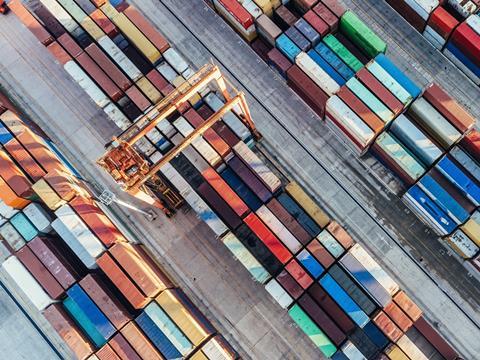
The packaging industry faces a number of serious geopolitical-related challenges that are set to have a major impact on operations and sustainability. In this article, Laura Rainier, Senior Director Analyst at Gartner, explains how these immediate and long-term problems can be tackled.
Constrained resources constrain growth. This is the reality facing supply chain leaders as they contend with the prospect of long-term resource constraints potentially impacting many aspects of their operations, from securing energy and fibers to minerals and labor.
According to Gartner data, 66% of supply chain leaders have invested in mitigating their raw material supply risks, yet only 28% cited “raw material availability due to geopolitical changes” as a key challenge in the next one to three years. This disparity highlights the urgent need for a strategic approach that can address both immediate and long-term constraints.
Our research found that supply chain and sustainability leaders most effective in driving action on long-term resource constraints focused on working with the short-term threats to business viability that stakeholders were most focused on.
Rather than presenting more data to emphasize the threat of long-term constraints, they used the clear and present dangers facing their organizations today as an opportunity to design solutions which address both near and long-term constraints simultaneously.
One key strategy these leaders used was integrating resource constraints into the product design process. By treating resource constraints as design problems, rather than just sourcing issues, leaders can create solutions that are both innovative and sustainable, ensuring the long-term viability of their supply chains.
Marginal changes can lead to transformational results
Marginal changes in product and supply chain design can deliver outsized impacts, addressing both immediate threats and long-term constraints. By integrating resource constraints into the design process, supply chain leaders can create solutions that are both innovative and sustainable.
Redesigning products to use alternative materials can reduce dependency on scarce resources. For example, one major European retailer aligned its bold growth targets and ambitious sustainability goals by creating a sustainable innovation hub that equips its designers with materials that reduce reliance on natural resources. Through the hub, the company has partnered with an outside startup to secure fabric sources from textile waste and recycled natural fibers.
An additional benefit of incorporating resource constraints into the design process is that it encourages a culture of innovation. When design teams are aware of the limitations and challenges posed by resource constraints, they are more likely to think creatively and develop novel solutions.
By focusing on design innovation, supply chain leaders can turn constraints into opportunities. This mindset shift from viewing constraints as obstacles to seeing them as catalysts for innovation is crucial for building resilient and sustainable supply chains. Sustainable supply chain leaders must champion this approach, fostering a culture that prioritizes design thinking and continuous improvement.
Designing out constraints
Effective collaboration with internal and external stakeholders is crucial for incorporating constraints into product and supply chain design. Supply chain leaders should work closely with design and engineering teams to ensure that current constraints are reflected in the design processes and that future constraints are anticipated.
This proactive approach allows organizations to design out potential bottlenecks and resource limitations, enhancing both resilience and sustainability.
Internally, this means breaking down silos and fostering cross-functional collaboration. Design, engineering, procurement, and supply chain teams must work together from the early stages of product development to identify potential constraints and develop solutions.
This integrated approach ensures that resource constraints are considered at every step of the design process, leading to more robust and sustainable products.
Externally, collaboration with suppliers and other stakeholders is equally important. Suppliers often have unique insights into material availability and alternative solutions that can be leveraged to address resource constraints.
By engaging suppliers early in the design process, organizations can tap into this expertise and develop more effective and sustainable solutions.
By fostering a culture of collaboration and integrating resource constraints into the design process, supply chain leaders can develop innovative solutions that address both immediate and long-term challenges. This holistic approach enhances resilience, drives sustainability, and positions organizations for success in an increasingly resource-constrained world.
Leveraging partnerships
Partnering with suppliers who have the capacity for innovation is essential for driving sustainable solutions. Supply chain leaders should leverage procurement strategies to engage suppliers in the design process, ensuring that materials and components meet sustainability criteria.
By fostering strong relationships with innovative suppliers, organizations can enhance their ability to address resource constraints effectively.
Suppliers often possess specialized knowledge and capabilities that can be crucial in developing sustainable solutions. By involving them early in the design process, organizations can benefit from their expertise in material science, manufacturing processes, and sustainability practices.
This collaboration can lead to the identification of alternative materials, improved manufacturing techniques, and more efficient use of resources.
By focusing on design innovation and leveraging supplier networks, supply chain leaders can address immediate threats while laying the groundwork for long-term sustainability. This dual approach ensures that organizations remain resilient in the face of current disruptions and are better prepared for future challenges.
If you liked this story, you might also enjoy:
The ultimate guide to the Packaging and Packaging Waste Regulation in 2024
How are the top brands progressing on packaging sustainability?
Sustainable Innovation Report 2024: Current trends and future priorities
Everything you need to know about global plastic sustainability regulation


















No comments yet